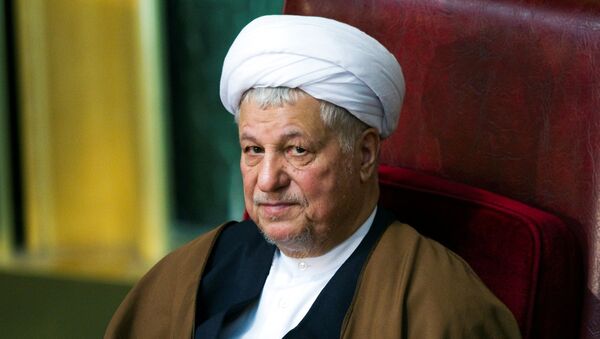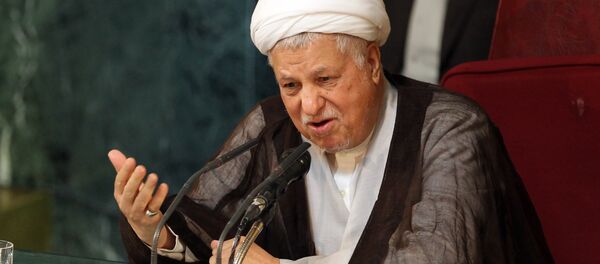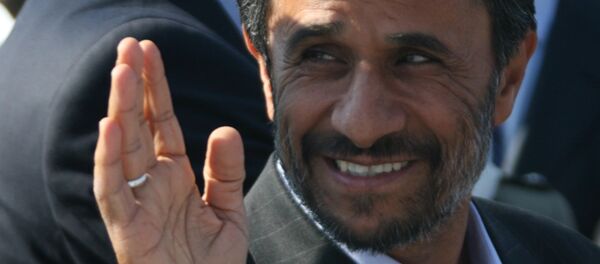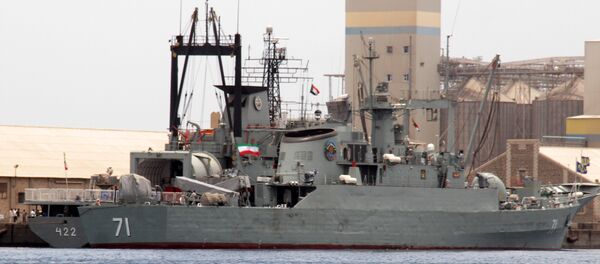It's as if for these past four decades, "Hashemi" – as he is popularly know in Iran (adversaries call him "The Shark") – was always there.
Marandi notes, "He was an extraordinary smart person, who was also a political genius. His alliances easily shifted, since he saw himself as a centrist. In the late 1980s and 1990s the leftists (later reformists) hated him and claimed that he was pro-American and a liberal capitalist who crushed the poor. At that time he was close to the conservatives (later principalists), but the leftists (later reformists) couldn't hurt him especially in the 1980s when he was very popular."
Confused? Well, that's Iran's complex/convoluted politics in a nutshell; nothing can be understood if one does not apprehend the nuances between principalists (those faithful to the radical precepts of the revolution) and reformists (some now within the current Rouhani administration, some silenced for good).
Exceptionalists don't do dialogue
Even after his own presidency, Rafsanjani remained in the spotlight. He vigorously supported suave reformist cleric Mohammad Khatami in the 1997 presidential elections. Khatami won hands down and proposed a "dialogue of civilizations" to include the US but that was predictably spurned, ruthlessly, and foolishly, by Washington.
Here's Marandi on the late 1990s: "When Khatami came to power (and suddenly jumped from a form of Islamic Revolutionary Socialism to Liberal Capitalism), Khatami's people led a smear campaign claiming that Rafsanjani was the root of all evil.. As a result Rafsanjani was crushed in the sixth parliamentary elections along with his conservative (later principalist) allies."
Then came the Ahmadinejad earthquake – in 2005. Rafsanjani, once again running, led the first round; but lost the second round to the hardcore populism of Ahmadinejad. The world remembers, with trepidation, that during the second part of the 2000s Washington, under Bush 2, was always a click away from "nuking Iran".
Still Hashemi The Shark was far from politically dead" "Principalists were divided, so Rafsanjani brilliantly created a coalition of his people, reformists, and a faction within the principalists and brought Rouhani to power."
So in a nutshell, since the late 2000s Rafsanjani had been the de facto top articulator in and around the reformists, as well as other factions marginalized in the political area. He was the certified bête noire of the principalists. And that could not but pit him, occasionally, against Supreme Leader Ayatollah Khamenei himself.
Khamenei's strategy boiled down to preside over some sort of equilibrium between the principalists – loyal to himself – and an array of "moderates" with varying degrees of reform in their DNA.
Then came the election of Hassan Rouhani – once again a Rafsanjani protégé — in 2013; the road map was finally clear for some sort of détente with Washington, crystallized in the complex nuclear negotiations that led to the UN-approved Joint Comprehensive Plan of Action (JCPOA).
Marandi notes how "after the JCPOA Rafsanjani was at the height of his popularity once again. In recent months with the economy stagnating and the US not abiding by its side of the bargain, he and Rouhani have begun losing their popularity, as some believe they were naive in trusting the US at the negotiating table (also corruption allegations regarding his son didn't help)."
Hang on to your seats
And that brings us to the proverbial "what now?" With The Protector gone, Rouhani and his team – which include yet another Rafsanjani protégé, the very able Foreign Minister Mohammad Javad Zarif — are on their own.
No one really knows what incoming US president Donald Trump and his army of Iranophobic generals will come up with regarding the nuclear deal, not to mention overall US-Iran relations. Hossein Mousavian, former senior official on Iran's Supreme Council of National Security, and former nuclear negotiator, has offered a few suggestions, but there’s no guarantee Team Trump is listening.
Crucial presidential elections take place in Iran later this year. It will be a Sisyphean task – and that’s an understatement — for the reformist Team Rouhani to accumulate political support. The principalists will fall over them like a ton of bricks.
With Rafsanjani out, it's safe to assume hardliners such as Ahmadinejad, the former head of the judiciary Mohammad Yazdi, and the ultra-hardcore Ayatollah Mesbah Yazdi, a.k.a "The Crocodile", will be back with a vengeance.
And there's an even more earth-shattering problem. Crucially, last year Rafsanjani got the most votes in the election of the 88-member Assembly of Experts, the all-powerful clerical club that approves Ayatollah Khamenei's successor. It was virtually a done deal that Rafsanjani would have got his candidate to win the Big Prize. Not anymore.
Marandi qualifies the Rafsanjani era as "a roller coaster ride for a brilliant politician." For Iran, the real roller coaster ride might as well start now.
The views expressed in this article are solely those of the author and do not necessarily reflect the official position of Sputnik.
Never miss a story again — sign up to our Telegram channel and we'll keep you up to speed!





